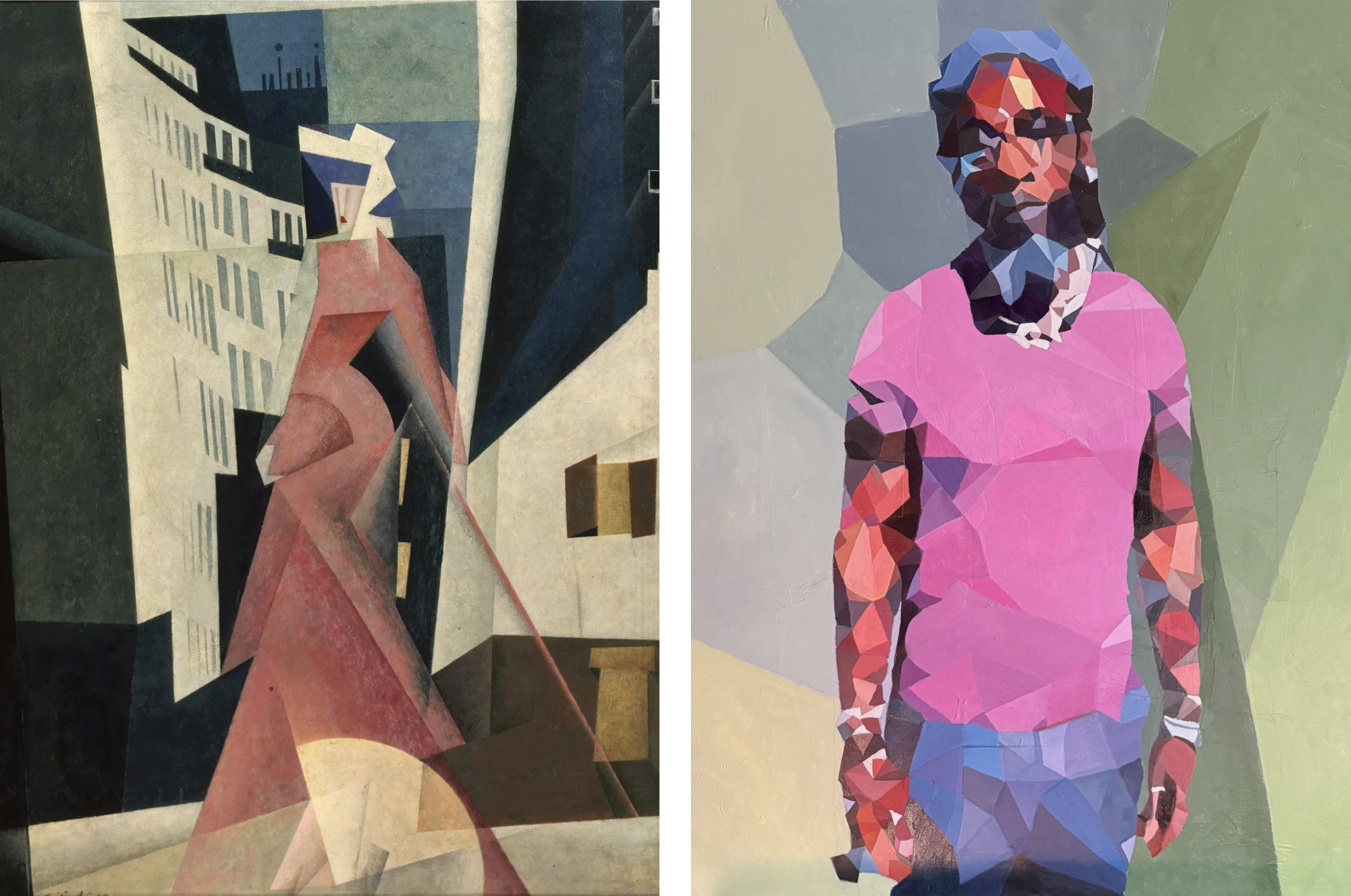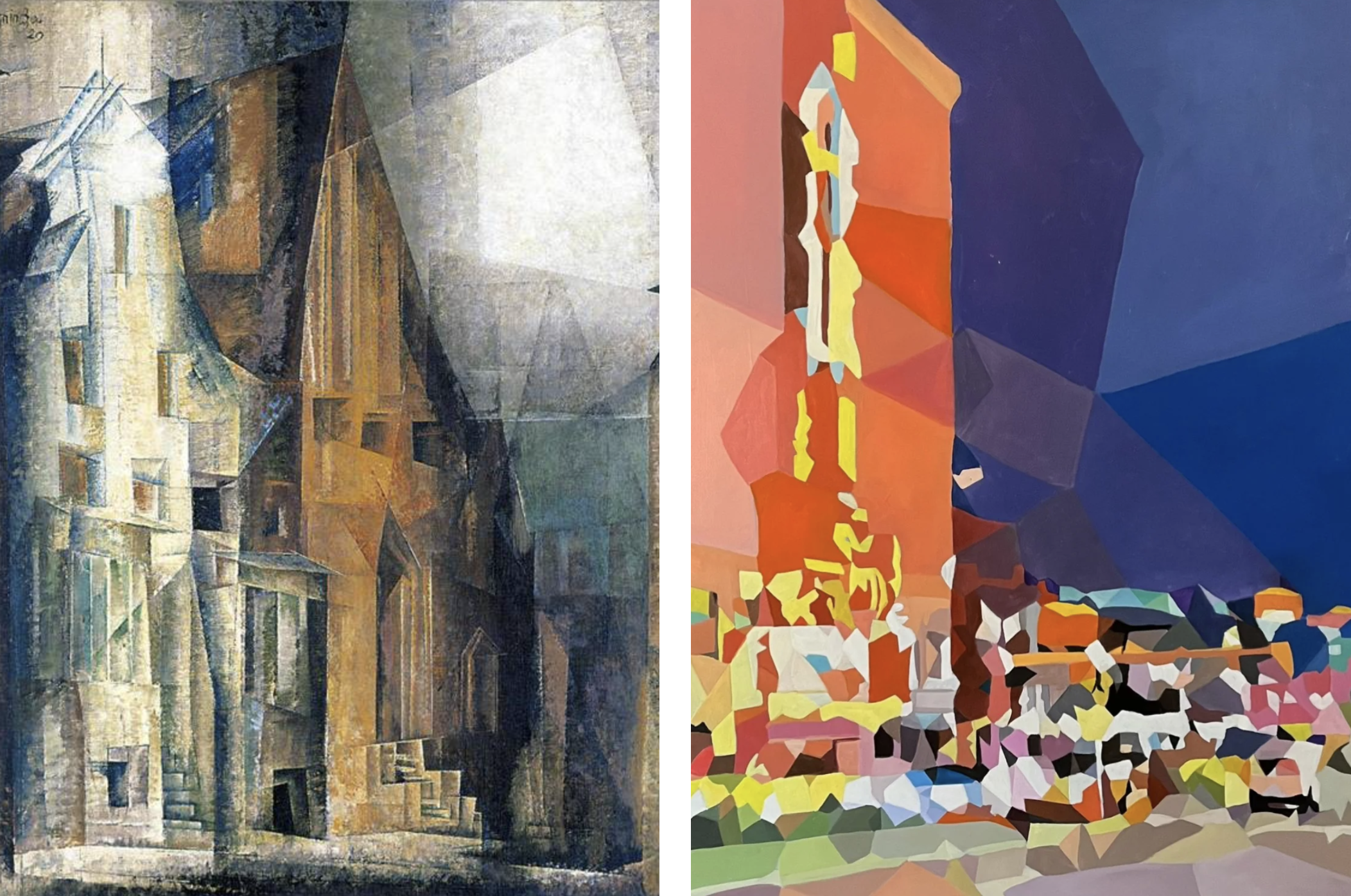The Architecture of Emotion
Bowen Kline in Conversation with Lyonel Feininger
( Left) LYONEL FEININGER, Woman in Mauve, 1922, Oil on canvas, 39 × 31 inches
(Right) BOWEN KLINE, Scotch Bonnet, 2025, Oil and acrylic on panel, 48 × 40 inches
Across the history of modern painting, artists have sought to reconcile the emotional with the architectural and find order within flux. From the fractured cubist geometries of Picasso and Braque to blurred architectures of Gerhard Richter, the built environment has often served as a mirror for perception itself. Each of these painters understood structure not as a static form, but as a living rhythm. They found a way to organize physical form through light, space, and emotion.
(Left) LYONEL FEININGER Lüneburg on the Stretcher, 1929, Oil on canvas, 42 × 34 inches
(Right) BOWEN KLINE, Foxes and Hounds, Oil and acrylic on panel, 48 x 40 inches
Bowen Kline provides a contemporary echo of Feninger’s vision: cities pulsing with rhythm and light
It is within this perspective that Lyonel Feininger (1871–1956) emerged as one of the most poetic interpreters of Cubism. Working at the Bauhaus in the 1920s, Feininger transformed the analytical dissection of Cubism into something spiritual. His cathedral-like cityscapes reimagined architecture as a vessel for light and feeling. Rather than breaking reality apart, Feininger rebuilt it into harmony: his compositions giving the perspective of stained glass.
(Left) LYONEL FEININGER, Architecture II (The Man from Potin), 1921, Oil on canvas, 39 × 31 inches, Museo Thyssen-Bornemisza, Madrid
(Right) BOWEN KLINE, Edison, 2024, Oil and acrylic on panel, 49 × 40 inches
Both Feninger and Kline create rhythmic arrangements of shape and tone.
Bowen Kline extends this sensibility into modern painting. In his work, cities, crowds, and figures dissolve into prismatic networks of color and motion. Like Feininger, he leans into the geometry combining the human form with the urban grid. In works such as Edison and Foxes and Hounds, planes of rose, turquoise, and ochre vibrate, transforming the contemporary city into an architecture of feeling. His compositions, at once abstract and intimate, suggest that structure itself can be an expression of empathy.
(Left) BOWEN KLINE, Beer for Breakfast, 2025, Oil and acrylic on panel, 40 × 48 inches
(Right) BOWEN KLINE, 44th Street, 2025, Oil and acrylic on panel 40 x 48 inches
In both artists' work, the boundary between the body and the building and emotion and order, becomes fluid. Feininger's cathedrals and Kline's city streets share a language of color, form and light. Together, they remind us that painting is not only a visual act but an architectural one built from the same matter as memory.
(Left) BOWEN KLINE, December 1, 2024, Oil and acrylic on panel, 51 ½ × 49 inches
(Right) LYONEL FEININGER, Gelmeroda IX, 1926, Oil on canvas, 39 × 31 ½ inches
Article by Melannie Chard





